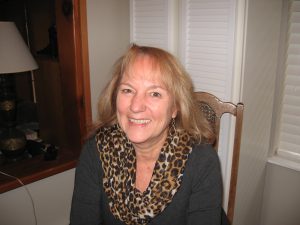Here’s the third installment of Four Writers, Four Questions. Installment #4 will be posted next week.
What are you working on right now?
I have a combination of light and intense work on the daily writing menu right now. I’ve just finished co-authoring Watershed Moments‑A Pictorial History of Courtenay and District. It was a great experience working with my co-authors and the editors at Harbour Publishing.
This process inspired me to go back to my second novel, Snow on the Monashee and clean it up. This is light work and gives me a view of how my approach to writing- and the world- has changed since I wrote it in 2014.
My more intense work is creating an outline for a new historic non-fiction book. I love research and discovery so this is exciting and I enjoy putting pieces of a puzzle together and creating an outline. The nice thing about outlines is that they’re so fluid. The basic bones remain the same as I move along; but the flow around them changes as I progress.
Why is this meaningful to you?
Right now, being able to move back and forth between fiction and non-fiction is meaningful to me. Until recently, I’ve put them into two categories, as though I had to choose between one friend and another. Non-fiction has always been my “work” as a curator and contractor. It’s enjoyable, but I use different processes for it than I do for fiction. I’m learning that creating both improves my writing.
 When working on Watershed and talking to Paula about it, she gave me some great advice about presenting history in a pleasurable reading style. Seeing the response to the book and working with the other authors’ styles has been an eye-opener. I’ve begun to worry less about what readers think about my writing and to focus more on what I bring to life and the readers’ enjoyment.
When working on Watershed and talking to Paula about it, she gave me some great advice about presenting history in a pleasurable reading style. Seeing the response to the book and working with the other authors’ styles has been an eye-opener. I’ve begun to worry less about what readers think about my writing and to focus more on what I bring to life and the readers’ enjoyment.
I’ve also recently been reading books like In Fact: The Best of Creative Non-Fiction by Lee Gutkind. This has helped me remove my self-imposed style boundaries between fiction and non-fiction.
What is your process?
My process involves taking my curiosity and wrapping that up with a love of work, daily routine and focus. Pair this with intermittent procrastination, insecurity and second-guessing and it’s a typical week.
For ongoing learning, I read a lot. I also subscribe to a couple of blogs that delve into the nitty-gritty of writing and push me. One is Daphne Grey Grant’s Publication Coach (Vancouver) blog. Her take is that writing is open to the public and it’s not a higher mystery. It requires organization, work, strategy and inspiration from reading, listening and all aspects of life.
Finally, I have wonderful friends and family who are patient with my rough drafts and projects. My family tends to see plain-old-everyday writing as a fine means of expression. The more humour the better. Growing up, my father wrote poems and put them into our brown-bag lunches. My mother was a crossword aficionado and more. My uncle is 97 and just published a book of 97 poems. The list goes on. How lucky could I be?
Why do you write?
I write because it’s a creative state of constant improvement, learning and discovery. It’s a world of acknowledging and following connections and possibilities. I’m able to take my pick of subjects: people, nature, animals, landscapes, seascapes and skyscapes, past, present, future-and run with it. A free-range writer.
Deborah Griffiths is the author of two fiction books (written under the pen name Deborah Greene) and three non-fiction books including Heather’s Amazing Discovery (finalist, children’s non-fiction, Vancouver Children’s Literature Roundtable) and Watershed Moments — A Pictorial History of Courtenay and District (with Christine Dickinson, Judy Hagen and Catherine Siba).
